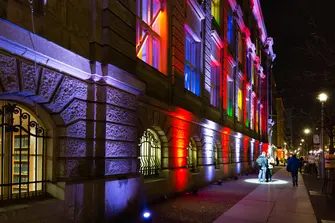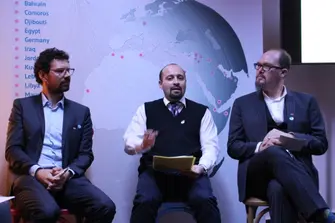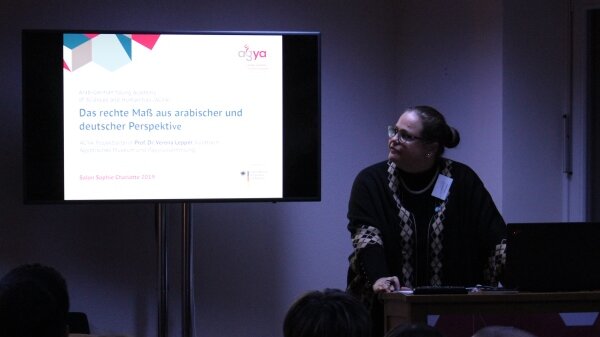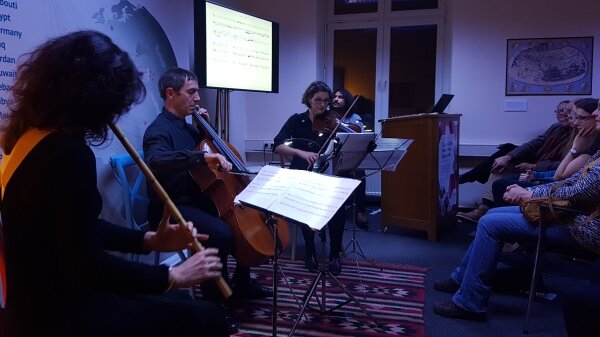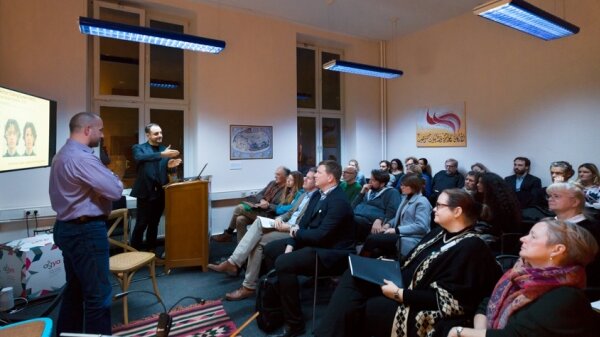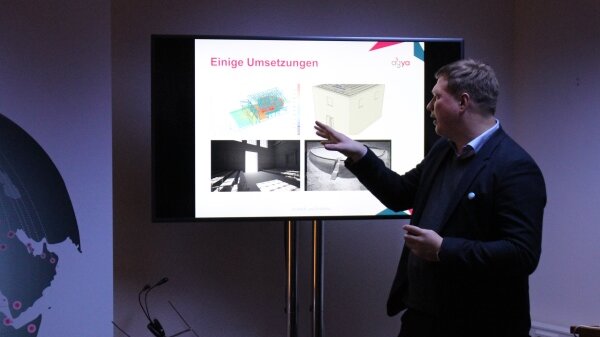‘The Right Measure’ from Arab and German Perspectives: AGYA Contributes to the Salon Sophie Charlotte 2019 of the BBAW
‘The Right Measure’ from Arab and German Perspectives: AGYA Contributes to the Salon Sophie Charlotte 2019 of the BBAW
AGYA’s contribution to Salon Sophie Charlotte 2019 explored the various connotations of the German expression 'Das Rechte Maß' (The Right Measure) from the mathematical and natural science idea of measurement to the philosophical and legal idea of balance and good judgement.
In the year 1900, theoretical physicist Max Planck laid the conceptual foundations for a system of measurement ‘for all times and cultures – even extra-terrestrial and non-human’, as he put it. Today, it forms the basis of the ‘International System of Units’ (SI), the modern metric system widely used around the world. This year, in May 2019, four of the seven SI base units will be updated and redefined according to natural constants. Meanwhile, September 2019 will mark the 250th anniversary of Alexander von Humboldt’s birth, whose endeavours to measure the world also remain of extraordinary importance today. For these reasons, the Berlin-Brandenburg Academy of Sciences and Humanities (BBAW) chose ‘Measure and Measuring’ as the theme of its 2019 Salon Sophie Charlotte, an open forum hosted annually at the Academy building in Berlin.
As in years past, AGYA members once again participated in the Salon Sophie Charlotte, contributing a rich and diverse programme titled ‘Das rechte Maß aus arabischer und deutscher Perspektive’ (‘“The Right Measure” from Arab and German Perspectives’), on 19 January. The German expression ‘Das rechte Maß’ has various connotations. Literally, it translates to ‘the right measure’. In the figurative sense, it means to choose the right balance, the golden mean, between too much and too little. AGYA’s interdisciplinary programme at the Salon Sophie Charlotte 2019 explored the various connotations of the German expression from the mathematical and natural science idea of measurement to the philosophical and legal idea of balance and good judgement. Host of the evening was AGYA Principal Investigator Prof. Dr. Verena Lepper, with seventeen AGYA members and nine additional invited speakers contributing to the event.
Like Alexander von Humboldt, AGYA is dedicated to interdisciplinary research and communicating science to a broad public using uncommon and creative formats. In this vein, the evening began with AGYA members Dr. Christian Fron and Dr. Konstantin Klein using maps as a means to question our recieved perspectives on the world. Together with AGYA member Dr. Luise Fischer, they had selected a number of artfully illustrated historical maps highlighting a diversity of cartographic standards and worldviews. They showed how maps, both past and present, are never merely factual depictions of the world. As social constructions, they also reflect the respective zeitgeist in which they are created. Fron demonstrated this point by comparing the historic maps ‘Tabula Rogeriana’ and ‘Ebstorfer Weltkarte’. The 13th-century ‘Ebstorfer Weltkarte’ presents a Christian interpretation of the world with Jerusalem in the centre. While one could easily get lost in the 1,600 drawings that fill the map, Fron generously pointed the way to paradise: ‘You can find it right behind India in the upper left corner.’ The ‘Tabula Rogeriana’, in contrast, was made by the Moroccan geographer Muhammad al-Idrisi, commissioned by Roger II of Sicily. In this map, oriented with the North at the bottom, Sicily is in the centre.
Interweaving musical traditions of the Arab world and contemporary European music, AGYA member Dr. Rami Chahin composed a new piece specifically for the evening. It was inspired by the graphic novel Piano Oriental by Zeina Abirached, which was introduced by AGYA members Dr. Christian Junge and Prof. Dr. Barbara Winckler as an example of the intertwining of literature, music and visual art from different time periods and cultures. The new piece and other works composed by Rami Chahin were performed by cellist Graham Waterhouse, vocalist Larissa Neudert, violist Kirstin Maria Pientka, and nay player Valentina Bellanova. The pieces combine essential features of European spectral music of the 20th century with the specific microtonality of Arab music, both traditional and new. Chahin’s compositions thus build a bridge between different music cultures.
Visitors were also invited to take an active role in AGYA’s onsite labs ‘HörBAR (Hearing Bar/Audible) and FühlBAR (Feeling Bar/ tangible)’. In the HörBAR, rhetorically gifted or at least courageous visitors tested the vigour of their voices in an acoustic simulation of the ancient Roman senate house Curia Iulia set up by AGYA member Dr. Christian Fron and his project partner Prof. Dr. Peter Scholz. Some participants could have competed with Cicero, whose voice was known to reach 80 decibels when addressing the senate. At the ‘FühlBAR’, AGYA member Prof. Dr. Oliver Korn demonstrated how emotion recognition algorithms identify basic emotions such as joy, anger or contempt. In a joint presentation with Dr. Thomas Bächle, Korn discussed the difficulties in measuring emotions by mapping facial expressions, even though emotion, as a mental state, is perceived and interpreted in very individual and subjective ways.
For the first time, AGYA also participated in another series of talks at the Salon Sophie Charlotte on the topic of ‘Aesthetics’. AGYA members Dr. Kirill Dmitriev and Prof. Dr. Bilal Orfali engaged Lebanese architect Bernard Khoury and German architect and design professor Friedrich von Borries in a lively debate that revealed their very different approaches to social responsibility in architecture and urban planning.
Date and Venue
19 January 2019
Berlin-Brandenburg Academy of Sciences and Humanities (BBAW), Berlin, Germany
